Being immersed in the fitness industry provides me with a ton of different opportunities to experience different techniques, methodologies, and products. I recently had the privilege of a...
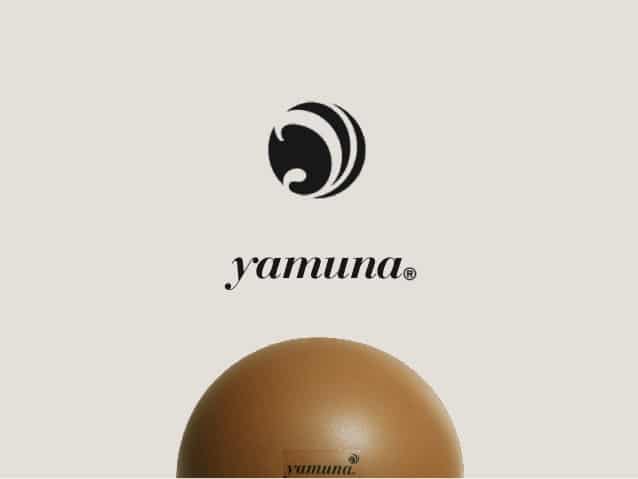

Being immersed in the fitness industry provides me with a ton of different opportunities to experience different techniques, methodologies, and products. I recently had the privilege of a...
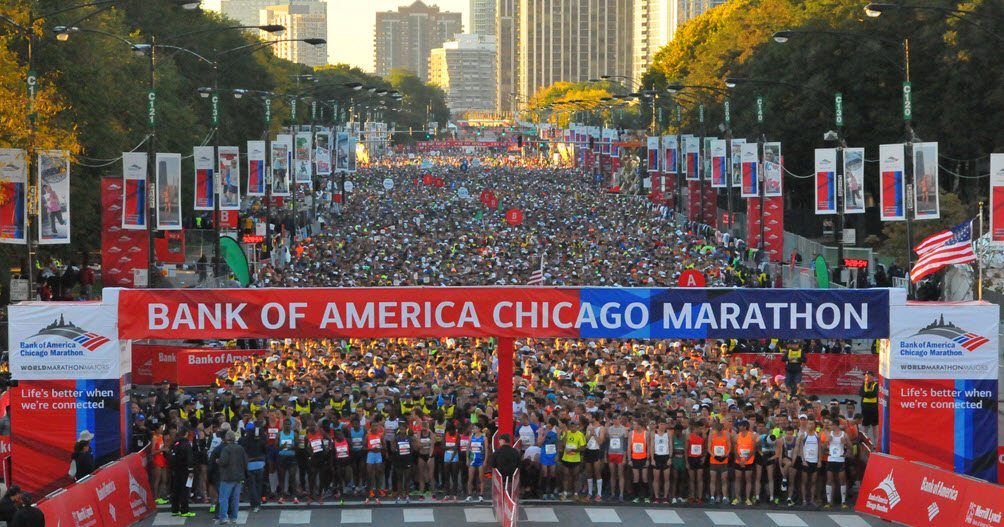
Leading up to the Chicago Marathon 2016 The Chicago Marathon provides an excellent course, plenty of support and, for me, a chance to visit home for a few days. It was no different for me this...

September 25 was going to be my day. The Ironman Augusta 70.3 triathlon was finally here. The race I had been training so hard for on one of my favorite courses. It was four-and-a-half months...
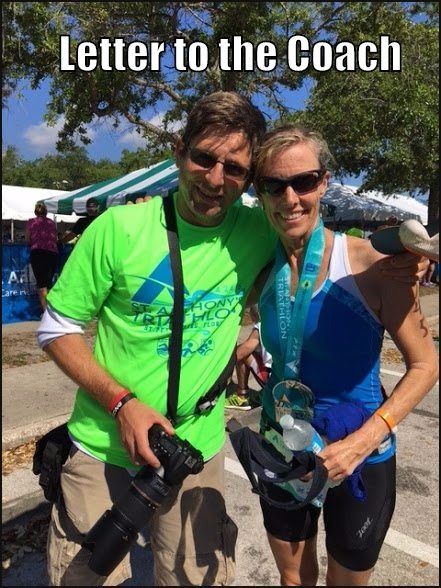
I have been an endurance coach for some time now. Once in a while, I receive an email from a client which chokes me up with pride. Today, I received one of those letters, so instead of sharing it...
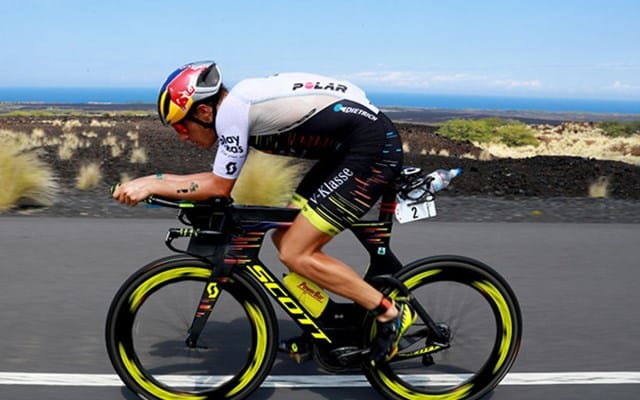
I found when looking for ways to get faster on the bike, is that there is so much information, from different coaches and experts, that it can be confusing and overwhelming. Personally, I...
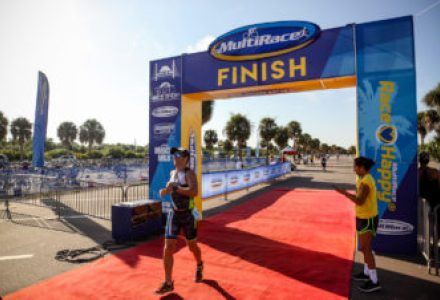
The previous post was a review of the FD3 Triathlon Series as if it was a product. Below you will find a more detailed account of my personal experiences during the race. Let me know in the...
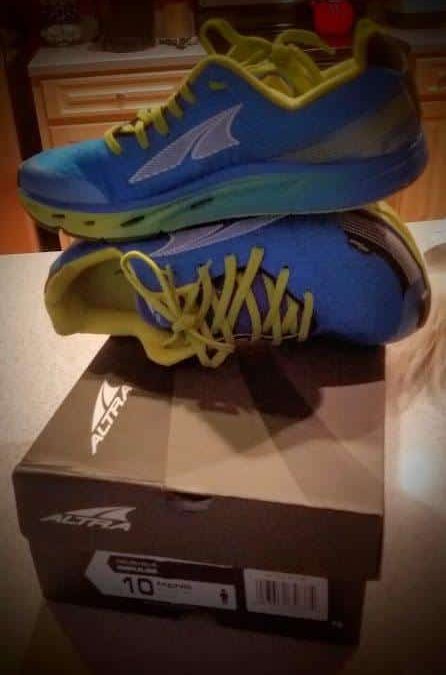

Are you seeing a pattern yet? Yes, I am becoming a huge fan of the 6 year-old running shoe company known as Altra. As I have been instructing clients in form techniques, and have found that most of the models Altra manufactures, lend themselves to my favorite principles.
The Altra Impulse is no different.
As with all of Altra’s models, my favorite advantage is their FootShape™ Toe Box. This is the incomparable wide toe box that Altra is known for. The toe box is makes any of Altra’s models recognizable from a good distance away. That is how wide it is. I enjoy the ability splay my toes and have my feet firmly hit the ground without them being cramped up. Wider toe boxes also allow the feet to develop more strength because the shoe is not tightening around the ball of the foot or the toes. The toes can move around, and tackle all kinds of terrain.
As you can see from the x-ray below, the amount of splay the toes are allowed in the Altra vs a traditional toe box. Imagine having access to the full splay of your foot while you run. What is amazing is that most runners do not even realize the limits that a traditional toe box causes. (Hmm, maybe there is an idea for a full post.)

The Altra Impulse is no different in this department. The FootShape™ toe box has been incorporated and has all the comforts of the other models I have run in.
I love the Zero Drop™ technology that Altra incorporates. When I run I have the ability  to utilize the full power and flexibility of my calf not to mention I can run as if I was barefoot, as our bodies were intended. Most traditional running shoes have a 12mm heel drop. This means that the heel is 12mm above the ball of the foot.
to utilize the full power and flexibility of my calf not to mention I can run as if I was barefoot, as our bodies were intended. Most traditional running shoes have a 12mm heel drop. This means that the heel is 12mm above the ball of the foot.
When we are barefoot, the heel and the ball of the foot are equal which is a Zero Drop™. This also helps with heel striking. Have you ever tried to heel strike while running barefoot? Even if you are a regular heel striker in shoes, it is almost impossible to heel strike while bare foot running. A huge effort has to be made to do that.
So, why runners continue to heel strike? If your heel is more cushioned in the shoe, then of course you will want to hit that area first. (Another post may be needed to explain a little more on this too…stay tuned.)
I love the Innerflex™ which are grooves at the bottom that create a more flexible sole.
One of the huge differences with the Altra Impulse is that they also incorporated their patented StabiliPod™ technology along side the Innerflex™. Now you have a stability shoe that is also somewhat flexible.
I have decided to put this feature as a liked feature more for others than myself. As a pure neutral runner I prefer to work allowing my body to support me, not my shoe, but Altra is marketing this shoe not only for running and triathlon, but for cross training as well.
The StabiliPod™ technology does really help in moving laterally, which is not something that is usual for runners, and especially those of us whom usually stick to the pavement. This is why I do like this feature.
 My absolute favorite feature of this shoe are the drainage holes in the sole. My very last test run with the impulse was an 8 mile run, immediately following a huge rain storm here in Tampa, Florida.
My absolute favorite feature of this shoe are the drainage holes in the sole. My very last test run with the impulse was an 8 mile run, immediately following a huge rain storm here in Tampa, Florida.
My route took me through numerous ankle deep puddles and while my socks remained damp, the shoe was clear of water within a few yards of the puddle. There was no squish from the sole of the shoe or my sock because as my foot pushed down on the shoe, the holes squeezed water out the holes. No more blisters from soaked uppers and water log socks release water as well.
The Altra Impulse also continues with Altra’s A-Bound™/EVA blend compound which sits directly under the foot and adds a return of energy and reduces ground impact.
The upper is a light material and does have a noticeable difference from the other models. The tongue and laces are curved with the shape of the shoe which differs from the straight tongue of traditional running shoes.

I actually enjoyed this new feature. The fit of the shoe felt more comfortable with the tongue falling in the same curve as my foot.
I rarely run without socks, but I did end up having to do go out for a couple of miles one day without socks, and they were extremely comfortable. While the upper is not seamless it is very close. There are only a couple of seems that surround the tongue, but they are covered with a light fabric that helps reduce any friction.
This is probably a very individual issue, but even though I sized up to a 10 from a 9 and a-half, after a few miles my toes still ended up moving forward till I they hit the front of the shoe. This probably has to do with the fact that I only lace my shoes tight enough to lock in my heel.
If you like your shoes laced up tight this probably will not be an issue.
The price point for the Altra Impulse is $120 dollars, which while competitive in the market place it still is a little expensive. In this day and age where people are scrounging for liquidity, I really would like to see at least one company come out with a quality shoe that retails for under $80. Of course that is my opinion and my opinion only.
Quality – 4/5
Upper – 5/5
Outsole – 5/5
Flexibility – 4/5
Comfort –5/5
Appearance – 4/5
Cost – 3/5
Have you ever run in an Altra Running Shoe?
What were your experiences?
Which model do you like best?
Carpe Vitam!
(Seize Life!)
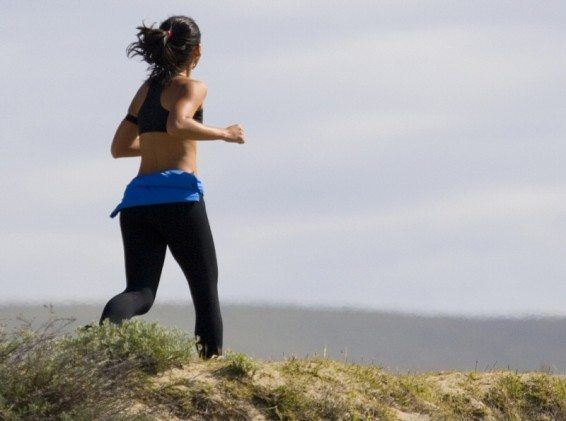
I can hear it now….”Know wonder they call you a Goof…you are crazy.”, “So, if I run slower I will get faster? You are out of your mind.” It was not to long ago I used to think the same thing, but as with everything I post, there are reasons and science to back it up.
Let’s face it, logic would dictate that pushing the pace of your easy days, as close to race pace as possible, would help you get fit faster and help you speed up, right? A lot of coaches, including myself, will tell you to run slow on your easy days, and easy days should be making up anywhere from 50-75% of your weekly mileage.
I have clients continuously asking me, “why are my easy days so slow?” The latest is my famous sit downs with my runners telling them to slow down after examining their data and finding them running tempo speeds during an easy day.
The answer to the question is what Arthur Lydiard and most other coaches would call the aerobic system. The aerobic system, or aerobic development, is the one of the most important fundamentals into unlocking your true potential.
Let us first check the stats on the energy contribution the aerobic system provides for races. As you can in the chart below, even the shorter events like the mile, over 80% of the energy required to run the race is produced via the aerobic system.
Aerobic training is the scientific fact that to move your body at higher intensities, the body needs to break down sugar and convert it to glycogen so it can be used as energy.
The aerobic system plus oxygen starts a chemical reaction known as Aerobic Glycolysis which continuously powers continuous endurance activities. In the aerobic system energy ATP is produced through Pyruvic Acid and Lipid/Protein fragments entering the Kreb Cycle and the Electron Transport Cycle.
Uh…what?
During aerobic respiration (yeah, that’s breathing) the body uses all the oxygen it needs to power the muscles. When you are running in your “aerobic zones” (easy runs), your muscles have enough oxygen to produce all the energy they need to perform.
See? Improving your capacity to transport and efficiently use all the available oxygen to produce energy will enable you to race faster since this makes up 85-99% of the energy needed to race.
Since running easy is aerobic development, what better way is there to train the aerobic system? There is none.
Capillary development – capillaries are the smallest of the body’s blood vessels and they help deliver oxygen and nutrients to the muscle tissues while exporting waste products out. The larger the number of capillaries you have surrounding each muscle fiber, the faster you can transport oxygen and carbohydrates to your muscles.
Aerobic training (easy running) increases the number of capillaries per muscle fiber, thus improving how efficiently you can deliver oxygen and fuel to your working muscles and how quickly they can clear waste products.
Myoglobin is a protein in the muscles that binds the oxygen that enters the muscle fiber. When oxygen becomes limited during intense exercise, myoglobin releases oxygen to the mitochondria to produce more energy.
The more myoglobin you have in the fibers of your muscles, the more oxygen is transported under aerobic stress. Like, uh, during a race. Aerobic training increases the amount of myoglobin you have in your muscle fibers.
Mitochondria are microscopic organelle found in your muscles cells that contribute to the production of ATP (energy). In the presence of oxygen, mitochondria breakdown carbohydrate, fat, and protein into usable energy.
Therefore, the more mitochondria you have, and the greater their density, the more energy you can generate during exercise, which will enable you to run faster and longer.
Aerobic training increases both the number and the size of the mitochondria in your muscle fibers.
Suffice it to say that aerobic development is the single most important factor to long-term development.
Of course, track workouts, VO2 max sessions, tempo runs and cross training will increase your fitness and are still incredibly important to racing faster. However, nothing will help improve continuously like developing the aerobic system.
Aerobic development is dependent upon running in your aerobic zones (for my runners Zones 1-3). This is why running faster on your easy days develop the aerobic system. Once you step out of those aerobic zones, on easy runs you diminish development of your aerobic system, but you also increase the chance for injury. Nope, two negatives do not make a positive in running.
This is one of the single biggest mistakes runners of all experiences make in their training.
As a coach and trainer I have always distinguished myself because I am always able to give my clients and readers the “why”. (Sometimes my clients end up telling me to just shut my mouth. when I am training with them because I am continuously telling them why they are doing each movement of an exercise or workout. I guess it may not be an advantage all the time. Go figure.)
Scientific research has been able to identify how the aerobic system adapts and responds to certain training paces. Physiologically we know:
It is pretty clear now right? Your optimal easy run pace for aerobic development is between 55 and 75 percent of your 5k pace, with the average pace being about 65 percent.
It’s also evident that running faster than 75% of your 5k pace on your long run has very little additional physiological benefit.
In fact, the research indicates that it would be just as advantageous to run slower as it would be to run faster. Running around half of your 5k pace is pretty easy right? Wouldn’t you know it, the evidence is clear that it still provides near optimal aerobic development.
Feel free to let me hear your feedback. I welcome any other case studies, personal experiences and other research as I am always learning. I provide you with the best content I can, but I have an open-mind and know that there may be other research out there that may negate information I post.
~IronGoof
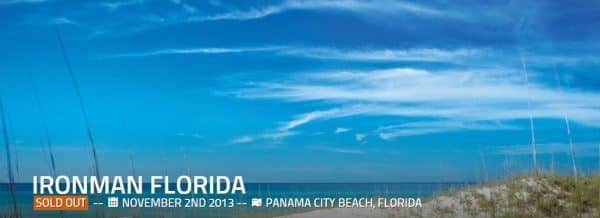
For a long time, it has been called the Granddaddy of all endurance events, the Ironman triathlon. A 2.4-mile swim, 112-mile bike and a 26.2-mile run done consecutively in the same day. Of course, nowadays, double, triple, and even deca Ironman distance triathlons are becoming more and more popular, as well as 24, 48 and even 72-hour mud and obstacle run challenges. If you are calling me crazy for doing my second Ironman, I can introduce you to at least a few people who do challenges that make Ironman look like a game of hopscotch. (Yes, Matt “UltraIronBeast” Dolitsky, you are one of those.)
This competition for me was a learning experience in overcoming obstacles, most of them mental. I did not PR, or even come close, but I now understand completely the quote, “The mind will quite 100 times before the body does.”
Pre-Race

Pete Amedure, Kari Eichen, Kat Ward, Jamie Breibart and myself all decided to drive up Wednesday morning in order to get acclimated to the environment and eliminate and reasons for not being prepared for Saturday’s race. Pete, Kari and I were in my car and had a great time on the way up. Of course, there was a stop at the Huddle House in Perry Florida where we ate and laughed to a point where I spaced out and left my phone, and didn’t realize it until we were half-an-hour from Panama City Beach. It didn’t help that I was in the middle of contracts and had all my recruiters contacting me about interviews and new opportunities. (I ended up remedying this by sending FedEx to the restaurant and delivering it to our hotel. In the meantime, Google Voice was a tremendous help.)
We arrived at the Laketown Wharf complex where we stayed in a luxurious three bedroom, three bath condominium, with a beautiful view of the gulf. I give this hotel/condo complex four stars. It had everything needed including a nightly water and light show that rivals the Bellagio in Las Vegas. Well, not really, but it was a fun amenity. The condos all have a full kitchen, with dishes, glasses, silverware, pots and pans, coffee maker, and a full-size refrigerator. Everything needed for the athlete, and spectathletes, to remove all those pressures of nutrition, and early morning breakfasts. The area also has plenty of great restaurants for good eating as well.
Afterward, we walked the quarter mile to athlete check-in to receive our chip, bibs, bags, and swag. I was a little disappointed in the swag this year. Last year they gave out beautiful TYR transition backpacks, but this year it was a very inferior white backpack that looks like it will fall apart. Jamie’s actually did, so they gave her a replacement immediately. The expo was about twice the size that it was last year, with a host of new vendors. Verizon was displaying their goods, as they were the tracking sponsor this year, along with Newton, Fit2Run, a local bike shop and a bunch of the regulars. Refuel was there, talking about Chocolate Milk, so I did create a video with them talking about the benefits of it. I will share that link on Twitter when I receive it. It should be good for a couple of laughs.
After that, we spent the next couple of days, taking in the aura of Ironman, preparing and eating. Eating was a non-stop event for us. I knew from experience that immense calories were going to be needed in order to be comfortable on the course, so I encouraged our team to keep eating as I did myself.
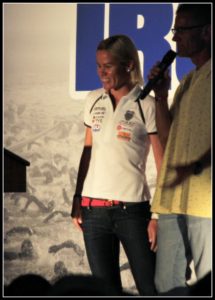 Thursday night was the athlete welcome dinner, and I was almost embarrassed. My recollection of the 2011 athlete dinner was so wonderful, that I really talked it up and encouraged Pete, Jamie, and Kari to come. Jamie decided not to go, but I was so excited for Pete and Kari to be there I couldn’t contain my emotions. Unfortunately, I was sort of let down. It seemed unorganized and hurried. Yes, my favorite pro-triathlete and world champion Mirinda Carfrae was interviewed on stage, so that was great, but the rest of it was about charities and a couple of athletes overcoming their own obstacles. There were video presentations about a woman who was competing for her husband who died the year earlier while training, and a quadriplegic who was competing to show the world that anyone could do anything if they just challenged themselves.
Thursday night was the athlete welcome dinner, and I was almost embarrassed. My recollection of the 2011 athlete dinner was so wonderful, that I really talked it up and encouraged Pete, Jamie, and Kari to come. Jamie decided not to go, but I was so excited for Pete and Kari to be there I couldn’t contain my emotions. Unfortunately, I was sort of let down. It seemed unorganized and hurried. Yes, my favorite pro-triathlete and world champion Mirinda Carfrae was interviewed on stage, so that was great, but the rest of it was about charities and a couple of athletes overcoming their own obstacles. There were video presentations about a woman who was competing for her husband who died the year earlier while training, and a quadriplegic who was competing to show the world that anyone could do anything if they just challenged themselves.
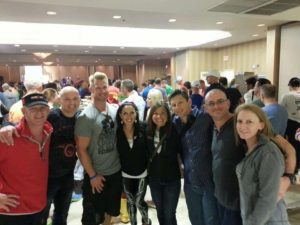 Yes, their stories were inspiring but I just felt like it was too much and way too long. In 2011 the presentations were balanced between the negative and the positive inspiring stories and we even had an athlete briefing by the race director all in the span of 90 minutes. It held the attention of every athlete to a point where the announcer almost didn’t need the microphone. This time, a good portion of the athletes conversed right through all the presentations to a point where it was hard to hear the MC with a microphone. I felt like I let my friend Pete down to a point where I was apologizing so much on the walk back I became annoying. Sorry, Pete and Kari.
Yes, their stories were inspiring but I just felt like it was too much and way too long. In 2011 the presentations were balanced between the negative and the positive inspiring stories and we even had an athlete briefing by the race director all in the span of 90 minutes. It held the attention of every athlete to a point where the announcer almost didn’t need the microphone. This time, a good portion of the athletes conversed right through all the presentations to a point where it was hard to hear the MC with a microphone. I felt like I let my friend Pete down to a point where I was apologizing so much on the walk back I became annoying. Sorry, Pete and Kari.
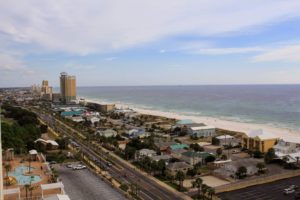 Friday, the anxiety hit like a ton of bricks. You couldn’t cut the tension in the condo with a Ginsu, serrated edge knife. We ate breakfast and then headed down to the beach to get in the water with our wetsuits. The waves sets were barreling to the shore with such force that the red, “no-swimming”, flag was flown, but we knew we needed to at least get in the water for a few minutes just to test out our goggles and our wetsuits. Surprising enough, even with the force of the waves, I thought I became a little more confident. I was able to stay on the surface of the water, and I practiced duck diving through the waves instead of trying to swim over them. I really thought I may have a chance of being faster out of the water than I thought.
Friday, the anxiety hit like a ton of bricks. You couldn’t cut the tension in the condo with a Ginsu, serrated edge knife. We ate breakfast and then headed down to the beach to get in the water with our wetsuits. The waves sets were barreling to the shore with such force that the red, “no-swimming”, flag was flown, but we knew we needed to at least get in the water for a few minutes just to test out our goggles and our wetsuits. Surprising enough, even with the force of the waves, I thought I became a little more confident. I was able to stay on the surface of the water, and I practiced duck diving through the waves instead of trying to swim over them. I really thought I may have a chance of being faster out of the water than I thought.
Afterward, we talked through our transition plans to double check our gear,  checked to make sure our bikes were ready to go and proceeded to transition to check-in everything. We had decided to try and wait out the rain, but unfortunately, I had a phone interview which had the chance of exceeding beyond the time check-in would close, so we walked down in the rain. The line was so long, I was going to be cutting it very close, so afterward, I ran back to the hotel. On the way back, I dropped my phone and cracked the screen. Yes, I had the phone back in my hands all of two hours and I dropped it. I have never broken a phone before, ever, and here I had two phone interviews and I cracked the screen. I was lucky enough that the phone still worked with voice recognition and a little effort, so the two interviews scheduled went off without any problems and I confirmed them both for second interviews as well.
checked to make sure our bikes were ready to go and proceeded to transition to check-in everything. We had decided to try and wait out the rain, but unfortunately, I had a phone interview which had the chance of exceeding beyond the time check-in would close, so we walked down in the rain. The line was so long, I was going to be cutting it very close, so afterward, I ran back to the hotel. On the way back, I dropped my phone and cracked the screen. Yes, I had the phone back in my hands all of two hours and I dropped it. I have never broken a phone before, ever, and here I had two phone interviews and I cracked the screen. I was lucky enough that the phone still worked with voice recognition and a little effort, so the two interviews scheduled went off without any problems and I confirmed them both for second interviews as well.
That night we had a good dinner at the Wicked Wheel and we were all in bed around 9 pm ready to take on the Ironman.
Race Day
As predicted, the night before was restless but I did end up sleeping a good 4-5 hours before the alarm went off. As planned we dressed in sweats, grabbed our “Special Needs” bags, nutrition for the bike, and headed to transition around 4:30 am. We were body marked, checked our bikes, dropped our bags, and then headed back to try and leisurely eat breakfast, and dress for the race. Kari cooked eggs and turkey bacon, I cooked oatmeal and we all hung out for a while and tried to prepare ourselves with our loved ones. It was kind of surreal. I remembered these moments from the first time I competed in this race, but it still seemed like it was all new again.
We dressed, pulled on our wetsuits halfway, hugged and headed for the start line. We walked  with Kari, Kim, and Danny down to the start, but athletes had to enter separately than spectators, so when we finally hit the beach we couldn’t find them. I really wanted to see them all before the start, but I knew I would be ok if I didn’t, but Kari had Pete’s goggles in her bag, so now it became imperative that we find them. We walked over trying to find them, so when it came to a point where we had no time left, we dropped our stuff and proceeded to button up our wetsuits and prepare to go under the arch. It was at that moment, our party found us. Talk about cutting it close. We hugged, gut our well wishes, wished each other luck and headed into the mass of athletes preparing for the start.
with Kari, Kim, and Danny down to the start, but athletes had to enter separately than spectators, so when we finally hit the beach we couldn’t find them. I really wanted to see them all before the start, but I knew I would be ok if I didn’t, but Kari had Pete’s goggles in her bag, so now it became imperative that we find them. We walked over trying to find them, so when it came to a point where we had no time left, we dropped our stuff and proceeded to button up our wetsuits and prepare to go under the arch. It was at that moment, our party found us. Talk about cutting it close. We hugged, gut our well wishes, wished each other luck and headed into the mass of athletes preparing for the start.
This year was a little different as signs were being held up with expected times for the swim. It could be compared to pace groups commonly found in road races except instead of going deep from a start line this went wide along the shore with the idea that if the slower swimmers would be the widest from the buoys and would fall in behind the faster ones. This was thought to bring down the chaos of a mass swim start, but for me, it was worse. I have been in comparable rough water, hit, kicked and swam over before and I always kept on swimming no matter what, but this time I was kicked so many times with the last time throwing my goggles from my face. It took me a few minutes to find them floating away from me, but I was able to put them back without too much trouble.
When I finished my first loop, the clock said 1:11 which was very slow. I thought I should be able to make up at least three minutes on the second loop, so I shouldn’t be in any danger of not making the 2:20 cutoff. I found a rhythm and just kept swimming, but I veered to the left of buoys and to keep correcting my course. When I made the turn for the straightaway to the swim finish, I glanced at my wrist to check my Garmin to see how much time I had left, and it was gone. Not only could I not find out what I needed to cross the swim finish, I wasn’t going to know how fast I would bike, or run. I wouldn’t know when to take my nutrition or even what time it was.
 Three buoys from the end I ended up with a paddle boarder on the left of me and jet ski on the right. The paddleboarder kept yelling the time I had left. “You have 8 minutes. You got this just keep going.” I have to admit, the idea of a DNF crossed my mind and it did not scare me. I thought to myself “would it really be the end o the world.” I would be able to support Pete, Jamie, and Kat and I wouldn’t have to worry about biking 112 miles, chafing, nutrition, none of it. Of course, I wouldn’t get to cross that finish line and I would feel like a failure and that is what really scared me. It wasn’t the disappointment of my friends or even my family, it was the disappointment I would have in myself. That never-ending coulda, woulda, shoulda would really haunt me, so I sped up and went as hard as I could. The waves after the sandbar helped and even though I got caught up in the rope tied to one of the lifeguard’s flotation device I was able to hit the beach at exactly 2:20 getting me over the timing mat at 2:20:08.
Three buoys from the end I ended up with a paddle boarder on the left of me and jet ski on the right. The paddleboarder kept yelling the time I had left. “You have 8 minutes. You got this just keep going.” I have to admit, the idea of a DNF crossed my mind and it did not scare me. I thought to myself “would it really be the end o the world.” I would be able to support Pete, Jamie, and Kat and I wouldn’t have to worry about biking 112 miles, chafing, nutrition, none of it. Of course, I wouldn’t get to cross that finish line and I would feel like a failure and that is what really scared me. It wasn’t the disappointment of my friends or even my family, it was the disappointment I would have in myself. That never-ending coulda, woulda, shoulda would really haunt me, so I sped up and went as hard as I could. The waves after the sandbar helped and even though I got caught up in the rope tied to one of the lifeguard’s flotation device I was able to hit the beach at exactly 2:20 getting me over the timing mat at 2:20:08.
I don’t mind stating that I was exhausted. I have stated it time and time again, that I am not even a good swimmer, but this really put it in perspective.
I ran into transition and the volunteers stated I had eight minutes to cross the bike mat, so they hurried me into my bib and jersey I was using for the bike, put on my helmet and shoes and rushed me out into transition to grab my bike. I crossed and headed out on my 112-mile journey.
My lungs were screaming and my stomach was churning, but I just kept going. I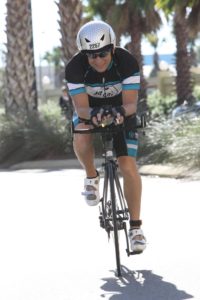 passed the mile 10 marker and about, what I estimate was around the 12-13 mile mark, nausea started. I pulled over to the side of the road and vomited sea water over the guardrail. Unfortunately, I have what is called a vasovagal response to vomiting, which basically means I pass out cold. I woke up, splayed out on the side of the road with the sun shining in my eyes. It took a while to get my wits and balance in order to get back on my bike. I continued slowly with the thoughts of turning around and just ending it. Who would blame me? I became sick on the bike, no one would care. With my stomach still churning and my head spinning I decided I would go to the twenty-mile marker and if I didn’t feel better I would turn around. The earlier thoughts I had of a DNF plagued me again and when I saw the 20-mile sign, I was still feeling sick, but better than I did. I took in some of the Isagenix mix I had in my bottles and decided to go on to the next marker, but it wasn’t more than a mile later I realized that if I turned around at the 30 mile mark, I would have biked 60 miles by the time I got back to the start. That’s when I knew I had it in me. It no longer was about time now it was about finishing.
passed the mile 10 marker and about, what I estimate was around the 12-13 mile mark, nausea started. I pulled over to the side of the road and vomited sea water over the guardrail. Unfortunately, I have what is called a vasovagal response to vomiting, which basically means I pass out cold. I woke up, splayed out on the side of the road with the sun shining in my eyes. It took a while to get my wits and balance in order to get back on my bike. I continued slowly with the thoughts of turning around and just ending it. Who would blame me? I became sick on the bike, no one would care. With my stomach still churning and my head spinning I decided I would go to the twenty-mile marker and if I didn’t feel better I would turn around. The earlier thoughts I had of a DNF plagued me again and when I saw the 20-mile sign, I was still feeling sick, but better than I did. I took in some of the Isagenix mix I had in my bottles and decided to go on to the next marker, but it wasn’t more than a mile later I realized that if I turned around at the 30 mile mark, I would have biked 60 miles by the time I got back to the start. That’s when I knew I had it in me. It no longer was about time now it was about finishing.
From that point on the bike ended up being uneventful. Sure, there were minor challenges. For instance, the wind picked up quite a bit, and of course, I still had no perception of time, except for when I asked, but I just put my head down and kept going.
Here is a little lesson learned while I was on the bike. As I mentioned the wind became a challenge during the bike, but I decided to wear an aero helmet and while I was in aero position and looked down, the wind became a little less a factor. I found myself being able to pick up a higher cadence. The minute I looked straight I could not only hear the wind, but I felt like someone had hit the breaks on my bike. Every article and person always said, one way and the cheapest way to become more aero was a helmet. They were right.
Being the last one out of the water did have one advantage. I wasn’t going to get passed. I was doing all the passing, and with each rider I passed, I felt a little bit of mental boost which helped a great deal. I rolled into transition in a little over 7 hours, which, in my estimation, had me on the side of the road for a little over 30 minutes. All-in-all it wasn’t actually that bad.
A volunteer grabbed my bike, I snatched my run gear bag and was greeted in the changing room by my friend, and client, Hugo Scavino. He helped me rid myself of the bib and bike jersey and don my shoes and hat. After a huge hug, I headed off onto the run course. I stopped briefly for words of encouragement, hugs and kisses from Kim, Kari, Maria and Anne, and off onto the course I went. I walked for about a quarter mile before I started running. I was kind of amazed. I felt like I was able to transition to my running legs a little easier than the Augusta 70.3 I competed in six weeks earlier. I hit the first aid station in about 1.5 miles and I was feeling pretty good. I formulated my plan of running from aid station to aid station and just walking while I was getting water and nutrition. This worked for the first loop.
 Pete and Jaime passed me at my mile 3 and their mile 10 and we shook hands and I motivated Pete with warning him I should not be able to catch him. Of course in the back of my mind, I was questioning if I could somehow make up 7 miles on him. Dave Nardoski caught up with me on his second loop, so I walked and chatted with him for a few minutes before I picked up the pace again. At mile 6 I saw Kat looking really strong and I yelled some encouragement to her as I passed. The halfway point for the first loop is in a park and I was feeling pretty good. I started doing the math in my head for what it would take to catch up to Pete and Jamie. The idea of the three of crossing together seemed surreal but possibly realistic. At mile 10 I saw Jamie and she had picked up the pace from Pete, and she looked really good. Obviously, the three of us crossing was most likely not going to happen unless I could really pick up some speed and Pete and I could catch her. A little while later I saw Pete again walking. We stopped for a minute and he told me that everything hurt. I gave him some encouragement and we parted. Just prior to the turnaround I found myself running next to Lew Hollander. Lew, is an 83-year-old, twenty-time Kona qualifier and finisher. He is extremely inspiring and is the epitome of the idea that age doesn’t have to be an excuse. We chatted briefly, he gave me some motivation, I congratulated him, he ran into the finisher chute and I made the turn. Kim and Danny were on the other side of the turn, so I was able to see them and get some love and hugs from Kim. She actually ran a little bit with me before I headed off.
Pete and Jaime passed me at my mile 3 and their mile 10 and we shook hands and I motivated Pete with warning him I should not be able to catch him. Of course in the back of my mind, I was questioning if I could somehow make up 7 miles on him. Dave Nardoski caught up with me on his second loop, so I walked and chatted with him for a few minutes before I picked up the pace again. At mile 6 I saw Kat looking really strong and I yelled some encouragement to her as I passed. The halfway point for the first loop is in a park and I was feeling pretty good. I started doing the math in my head for what it would take to catch up to Pete and Jamie. The idea of the three of crossing together seemed surreal but possibly realistic. At mile 10 I saw Jamie and she had picked up the pace from Pete, and she looked really good. Obviously, the three of us crossing was most likely not going to happen unless I could really pick up some speed and Pete and I could catch her. A little while later I saw Pete again walking. We stopped for a minute and he told me that everything hurt. I gave him some encouragement and we parted. Just prior to the turnaround I found myself running next to Lew Hollander. Lew, is an 83-year-old, twenty-time Kona qualifier and finisher. He is extremely inspiring and is the epitome of the idea that age doesn’t have to be an excuse. We chatted briefly, he gave me some motivation, I congratulated him, he ran into the finisher chute and I made the turn. Kim and Danny were on the other side of the turn, so I was able to see them and get some love and hugs from Kim. She actually ran a little bit with me before I headed off.
I was hurting now. At mile 14 I slowed to a walk. My feet were screaming in agony, my hips, quads, hamstrings and IT bands were in a lot of pain and I started getting a twinge in my back. I didn’t want to walk, but my legs were not letting me run either. I decided I would walk to the aid station of after mile 15 and continue from there. It didn’t happen the way I wanted. I ended up doing a series of run/walk intervals all the way to mile 18 where Pete and I crossed for the last time. We high-fived each other and continued on. Not too far ahead I stopped to use a portlet, but when I exited I became turned around and stupidly started running in the wrong direction. I caught myself about a half mile before I realized what I was doing and quickly did a one-eighty. I guess I was meant to run even more than a marathon this time.
I did meet Susan, a member of the Sarasota Storm Tri Club, which I have participated in races and training with. We chatted and played cat and mouse for a while. Susan had a very steady pace, so I would catch her and then when I would walk she would pass me. This happened about 3 or 4 times throughout the marathon portion. After getting completing the out-and-back in the park to head to the finish I started to feel like I just was about done with this whole thing. I was walking more than running, I was in pain and I was just ready for this experience to end. When I saw mile 20, I thought I only have a 10k left. I could do a 10k in my sleep. I started to pick up the pace just a bit. I walked through the aid station in between 20 and 21 and started talking to myself. “C’mon legs. Just one more training run. I need ya. Relax. Use gravity as momentum. We can do this.”
Ahead was mile marker 21, and it was then when I decided, there will be no more stops at aid stations, there will be no more walking. It was time to get this done. I picked up the pace and never looked back. I caught up with Susan at mile 22 and I told her to come with me. This was just a 5k with a one-mile warm-up. She said something that really motivated me. “You are really strong, Brad.” Who was she trying to kid? It wasn’t 12 hours ago I had thoughts of quitting. I didn’t quit though and here I was 4 miles from the finish of my second Ironman. I picked up the pace even more to a point where I was running at a sub 8:30 pace for a bit. I was in a lot of pain, but it was going to be worse if I stopped. Every time I passed another athlete or spectator they would say “Good job” and that just fueled me. A couple of the spectators would yell, “Awesome pace keep it up!” I ran through the Tri Club village at 25 when someone yelled “Go Goof GO!”, so I even picked up the pace even more. When I finally reached the chute there were two people running together in front of me and I didn’t know whether to let them go ahead or pass them. I passed them and sped up even more in order to make sure I was alone at the finish line.
I saw the finish line and didn’t even look at the clock. After all, I hadn’t known what time it was up to that point, so what did it matter now. The announcer bellowed, “Brad Minus from Tampa Bay, YOU ARE AN IRONMAN!” Oh, how sweet that sounded. Especially after being kicked, and hit in the water, losing my goggles and Garmin, vomiting and blacking out on the side of the road, and running through all that pain. I finally reached the finish.
A volunteer escorted me to Yvonne Van Vlerken, the women’s first-place finisher, who placed the medal around my neck. We congratulated each other and she gave me a hug, and then I continued with my handler to get a shiny warming sheath, and a finish photo before she handed me off to Kim, Maria, Jamie and the Dannys. I saw Pete sitting down and we just looked at each other with pain on our faces but pride in our eyes.
The rest of the night consisted of pizza and hard cider and regaling stories of the race. PB&J had accomplished what we set out to do a year earlier.
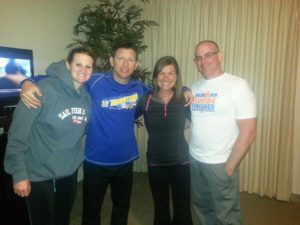 Jamie was the heroine of the night. When she decided to run she end up fast enough to finish with a 13:50. I am still so proud of her. Pete ended up a little under 15 and I ended up with a 15:09. I am not happy with it. It is significantly longer than 2011, but I finished and everything considered, I did have fun. That is what matters most.
Jamie was the heroine of the night. When she decided to run she end up fast enough to finish with a 13:50. I am still so proud of her. Pete ended up a little under 15 and I ended up with a 15:09. I am not happy with it. It is significantly longer than 2011, but I finished and everything considered, I did have fun. That is what matters most.
Thank you to all who tracked and reported on Facebook, for all the prayers, thoughts, motivation and kudos, Anne, Kari, Maria, Hugo and all the other voluneteers, Kim for supporting me and especially to Pete, Jamie, & Kat for being my training buddies through this journey.

I personally have been involved with charities that specifically relate to Cancer for over a decade now. With that in mind and the fact the my friend Ben Mena has taken on a challenge with the The Little Things for Cancer and created a team to run the Marine Corps Marathon, I thought this would be an appropriate time to incorporate a guest post by my friend David Haas. His bio is at the bottom of the post, but he is very active in creating awareness and outreach for Mesothelioma. Enjoy this great article and pass it on to anyone you know that cane be of benefit. Carpe Viam!
Nutrition plays an important role in helping to prevent many types of cancers, but it also plays a major role for those going through cancer treatments and therapies. Eating the right foods can help you maintain your energy levels, gain needed strength to go through treatment and improve your quality of life. However, vicious side effects such as nausea, loss of appetite and extreme fatigue can seriously affect your ability to eat.
Learning how to side step these problems and improve your nutrition can make cancer treatments easier to handle.
Nausea
Common cancer therapies such as surgery, radiation or chemotherapy often result in nausea. Since weight loss can lower immune system function, sap your strength, and lower your vitality, it’s particularly important to learn how to improve your nutritional condition when nauseated.
Start by eating smaller meals more frequently throughout the day. Sipping carbonated beverages, using foods or drinks that contain ginger; sipping clear soups and avoiding spicy foods can also help. It’s also important to stay hydrated, so focus on foods that contain plenty of liquids such as puddings, custards and creamy soups.
Loss of Appetite
The stress and emotional upheaval that comes with a cancer diagnosis can seriously affect your desire to eat. Uncertainty, fear of the unknown and strained family relationships only adds to the burden. Even if you don’t feel hungry, it’s important to eat a balanced diet that’s high in protein, fruits and vegetables. The University of Arizona Cancer Center suggests you take advantage of the time of day when your appetite is best.
Focusing on higher calorie foods for both meals and snacks will help because you won’t need to eat as much volume. Try adding fortified protein powders to milkshakes, snack on cheese and nuts, and add sauces or extra fats to your vegetables. Making sure you exercise everyday can also help to increase your appetite.
Fatigue
When you’re tied and worn out due to anxiety, medication, or treatment, poor nutritional practices only makes the depression or dragged out feeling worse. Getting plenty of liquids, exercise, and nutrient-dense foods in the form of colorful fruits and vegetables are important to keep the fatigue from getting you down.
While some causes of fatigue from cancers can’t be avoided, like the symptoms of mesothelioma, make sure you’re eating plenty of iron-rich whole-grain cereals, getting adequate sleep and eating enough protein foods such as eggs, beans and dairy. While paying attention to nutritional details can feel like it’s more trouble than it’s worth, keeping your nutritional intake high during cancer treatments can give you that extra edge you need to survive.
David Haas
Joining the MCA in 2011, David Haas is the Director of Awareness Programs. In addition to researching much of the information available to our site’s visitors, David often blogs about programs available and campaigns underway at the Mesothelioma Cancer Alliance. David is a fitness enthusiast who frequently runs, climbs, and bikes for enjoyment. He is also very involved in outreach associated with awareness about the dangers of asbestos for many different organizations and groups of people.
to researching much of the information available to our site’s visitors, David often blogs about programs available and campaigns underway at the Mesothelioma Cancer Alliance. David is a fitness enthusiast who frequently runs, climbs, and bikes for enjoyment. He is also very involved in outreach associated with awareness about the dangers of asbestos for many different organizations and groups of people.
Read more: http://www.mesothelioma.